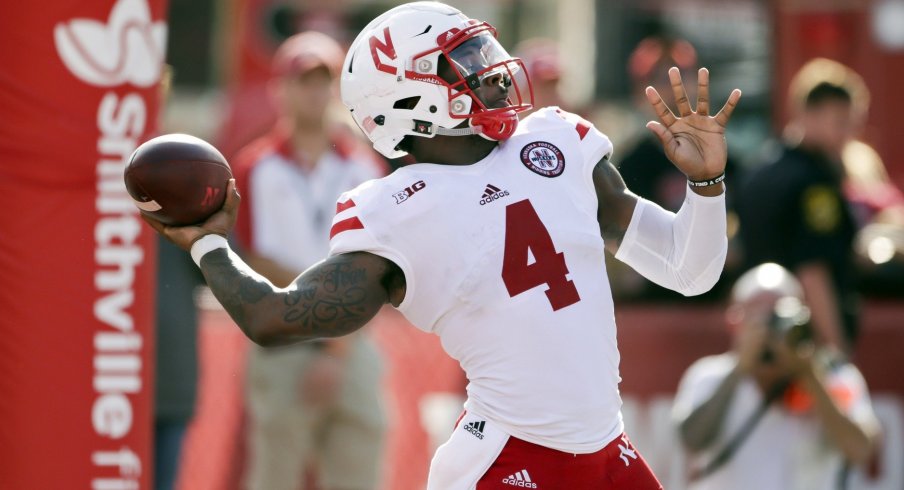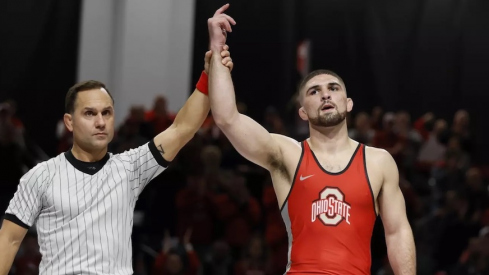The evolution continues.
If you're over 30, there's a good chance you picture Tommy Frazier running the option out of an I-formation when someone first mentions the Nebraska Cornhuskers. But in the two decades since famed coach Tom Osborne retired, much has changed about college football, and the Huskers have struggled to keep up.
After running the triple-option for decades under the famed coach and his disciple, Frank Solich, the Huskers brought in Bill Callahan to install a west coast pro-style attack that never took flight in 2004. After Bo Pelini took over the program in 2008, the Huskers got their own version of the 'spread' offense that was becoming so popular at the time, using multiple-receiver shotgun formations to stretch the defense in order to better execute option-run plays.
But after a string of 9-4 seasons led to Pelini's ouster following the 2014 campaign, Nebraska fans have seen their team undergo yet another change in identity. Although many players that were recruited to run the spread-option still remain, former San Diego Chargers and Oregon State coach Mike Riley brought decades of pro-style knowledge with him to Lincoln.
The result has been an odd combination of styles and philosophies that, in many ways, represents where the game is headed. On one play, senior quarterback Tommy Armstrong will line up in the shotgun to execute a run-pass option, combining an inside-zone run with a bubble screen to a slot receiver, before then taking the snap from an I-formation with two tight ends and a fullback the next.
Unlike the Buckeyes, whose offense intends to spread a defense out so they can better run the ball inside, there is no single overriding philosophy that guides the Huskers. Instead, Riley has adopted the same approach that currently dominates the NFL, looking simply to find personnel mismatches and exploiting them with whatever concept or formation works best.
The results, however, have been mixed. Armstrong has a strong enough arm to make any throw at any time, and is also a threat to pick up yardage with his feet, but has shown an inconsistency both in decision-making and accuracy as a passer.
With a career completion rate of 53 percent, the Huskers' signal-caller has struggled of late, completing under 40 percent in two of his last three contests. Additionally, since Big Ten play began five games ago, Armstrong has thrown only four touchdowns while giving away six interceptions. That has led Riley to simplify the game plan, giving him easy reads against defensive looks that can be predicted by the scouting report.
Against Northwestern one week ago, the Buckeye secondary was picked apart thanks to some predictable play-calling on their own side. Greg Schiano and Luke Fickell called almost exclusively for 'Quarters' on early downs before switching to man defense (Cover 1) in passing situations, and the Wildcats took advantage, targeting the weak spots of both concepts over and over. To keep the Huskers from gaining rhythm and confidence, the Buckeyes must do a better job of mixing up their coverages, forcing Armstrong to make the decisions instead of Riley and his staff.
To find a good example of a defense mixing up its coverages to keep opponents off balance, the Buckeyes won't have to look very far, as the Huskers do an excellent job of breaking tendency against spread offenses. Often lining up in a 'Quarters' shell with two deep safeties, the Huskers move all around just before the snap to confuse opposing quarterbacks and bait them into bad reads.
To create such confusion, defensive coordinator Mark Banker places a great deal of pressure on his safeties to play multiple roles. Playing almost exclusively with five defensive backs against spread teams, strong safety Nathan Gerry (#25) and nickel safety Aaron Williams (#24) move all around the field, covering a deep zone one play, man coverage on a slot receiver the next, and stepping up to the line in run coverage like an outside linebacker after that.
The duo of safeties is forced into these duties as senior linebacker and team leader Michael Rose-Ivey has proven to be a liability in open space against more athletic teams, forcing Williams to see increased playing time on early downs when opponents like to run the ball. Although the safeties play well against the run, as noted by Meyer during his weekly call-in show, this has led to offenses attacking those safeties directly in the run game as the season has worn on, hoping to wear them down by forcing them to take on the blocks of pulling offensive linemen.
While Gerry held up well against the Buck Sweep from Oregon above, he was easily cleared out by a pulling Indiana guard in the clip below:
Gerry is asked to set the edge as the 'contain' player, hoping to turn any run back inside to the 'force' players like his inside linebackers who can make the tackle, so Indiana simply countered by running right at him with two tight ends and a pair of pulling interior linemen. The Huskers may have to come up with a new plan against this scheme Saturday night in Ohio Stadium, as the Buckeyes have begun leaning heavily on the Buck Sweep recently, with Mike Weber and Curtis Samuel each breaking some solid runs around the edge over the past few weeks.
Identifying these personnel weaknesses in the run game will be vital for the Ohio State offense, as much like Wisconsin, the Huskers don't have five-star talent at every position, but are well-coached and execute at a high level. Given that they don't make many mistakes on their own, the Buckeyes must force them into no-win situations with run-pass options.
While quarterback J.T. Barrett hasn't been able to create many big plays in the passing game in recent weeks, he has been very efficient, making good decisions when distributing the ball and taking the openings provided by the defense. Allowing Barrett to make plays based on the simple decisions of the Husker safeties will undoubtedly be a key in the Buckeye game plan as a result.
Much as was the case in the second half of that Wisconsin contest three weeks ago, the Buckeyes should come out ahead as long as they avoid major mistakes. They have an edge in overall talent, however, the Huskers have enough of their own to hurt the Buckeyes if the home team isn't careful.
By taking a play out of Riley's own philosophical playbook and exploiting the areas of the Husker defense where they are weakest, Ohio State should come away with a statement win in the most raucous environment the Horseshoe has seen this season.


